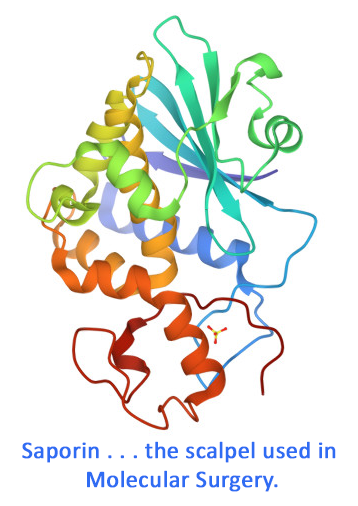The complement system is a group of small proteins found in the blood, primarily synthesized by the liver and circulating as inactive precursors. Upon activation by various triggers, proteases cleave specific components to release cytokines and initiate a cascade that amplifies the immune response. This process ultimately leads to the formation of the membrane attack complex, which can lyse target cells. The CR1 gene encodes a monomeric, single-pass type I membrane glycoprotein expressed on erythrocytes, leukocytes, glomerular podocytes, and splenic follicular dendritic cells. CR1 mediates the binding of immune cells to complement-activated particles and complexes. Altered expression or mutations in CR1 have been linked to several diseases, including gallbladder carcinoma, mesangiocapillary glomerulonephritis, systemic lupus erythematosus, and sarcoidosis.
This targeted toxin recognizes cells that express the CR1 receptor in humans. Anti-CR1-SAP is a direct conjugate between mouse monoclonal antibody to human CDR1 (clone 9H3) and the ribosome-inactivating protein, saporin.
The following control is included for validating the specificity of the beta conjugate: Mouse IgG-SAP (Cat. #IT-18)
This product is being offered as part of our Beta Testing program. It has saporin activity confirmed, peptide sequences published/confirmed, and/or antibody binding specificity published/confirmed. It has not been characterized or reported in scientific literature. The researcher who first publishes data* will receive a $500 credit for use on ATS products.
*Data subject to review by the scientific team at ATS. See complete details here.

